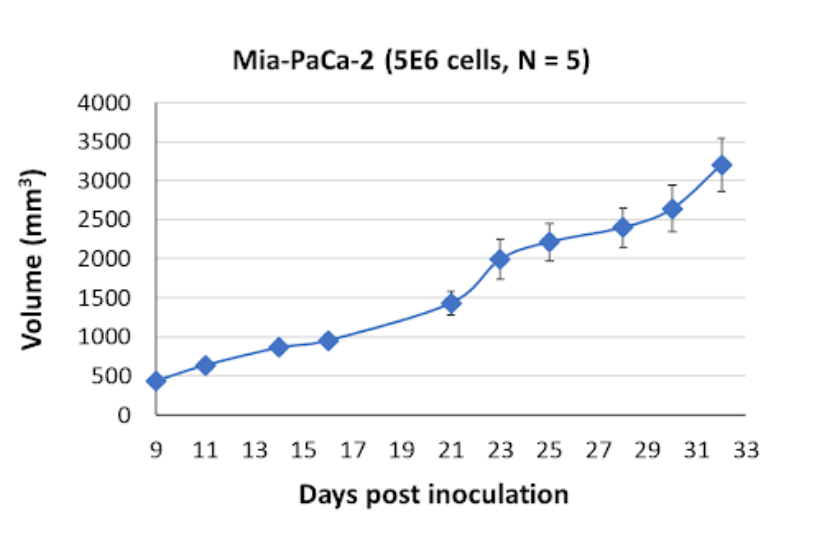About MIA-PaCa-2
Ideal for: KRAS, epithelial-to-mesenchymal transition (EMT), circulating tumor markers, radiolabeled nucleotide therapy
MIA-PaCa-2 is a hypotriploid human pancreatic cancer cell line widely used to study pancreatic ductal adenocarcinoma carcinogenesis. MIA-PaCa-2 cells are KRAS mutant, have a p53 mutation, contain a p16 (CDKN2A) homozygous deletion and are wild type for Smad4[1,2].
MIA-PaCa-2 cells are epithelial as they express CK5.6, AE1/AE3, and E-cadherin[1,2]. They also have characteristics of a mesenchymal phenotype with vimentin expression[2.] This has allowed MIA-PaCa-2 cells to be characterized as epithelial-mesenchymal which makes them an important intermediate model of the epithelial-to-mesenchymal transition (EMT). EMT is the process that initiates metastasis by switching epithelial tumor cells to the mesenchymal phenotype required to leave the parent tumor and ultimately colonize in distant tissues[3,4]. Targeting EMT and preventing metastasis has been a hot-button issue in cancer pharmacology for decades and one of the greatest limitations to studying this phenomenon has been the ability to replicate the EMT process in an in vivo model[4,5]. The reliable growth kinetics of MIA-PaCa-2 cells in the OncoRat are poised to make in vivo EMT research possible in the most physiologically relevant way available.
MIA-PaCa-2 cells demonstrate neuroendocrine differentiation with chromogranin A and synaptophysin expression2. Additionally, they express the hormone receptors SSTR2 and NTR1 that may enable the testing of peptide receptor radiolabeled nucleotide therapy in this cell line[2].
MIA-PaCa-2 Tumor Kinetics in the SRG™ Rat

MIA-PaCa-2 tumor growth in Hera’s SRG Rat.
Products & Services
Xenograft Efficacy Studies
Includes collection of blood, tissues & tumor for ADME, PK/PD and analysis.
(Bi)weekly Tumor Sampling
Via fine needle aspiration (FNA). For longitudinal evaluation of drug exposure, histology and gene expression.
OncoRats
Cutting edge models optimized for engraftment.
Get help with your research by scheduling a call with Hera.

References MLA
- Deer EL, González-Hernández J, Coursen JD, et al. Phenotype and genotype of pancreatic cancer cell lines. Pancreas. 2010;39(4):425-435.
- Gradiz R, Silva HC, Carvalho L, Botelho MF, Mota-Pinto A. MIA-PaCa-2 and PANC-1 – pancreas ductal adenocarcinoma cell lines with neuroendocrine differentiation and somatostatin receptors. Scientific reports. 2016;6:21648.
- Gupta S, Maitra A. EMT: Matter of Life or Death? Cell. 164(5):840-842.
- Mitra A, Mishra L, Li S. EMT, CTCs and CSCs in tumor relapse and drug-resistance. Oncotarget. 2015;6(13):10697-10711.
- Ombrato L, Malanchi I. The EMT universe: space between cancer cell dissemination and metastasis initiation. Critical reviews in oncogenesis. 2014;19(5):349-361.
